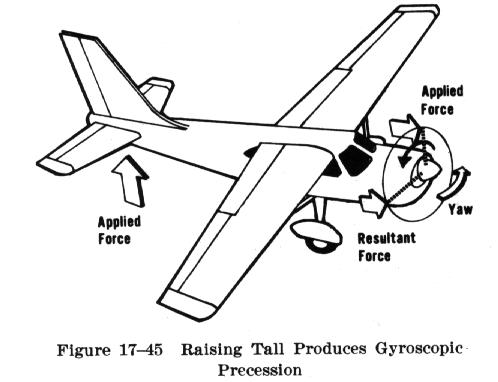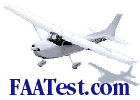| Gyroscopic Action
Before the gyroscopic effects of the propeller can be understood, it is necessary to understand the basic principle of a gyroscope. All practical applications of the gyroscope are based upon two fundamental properties of gyroscopic action - rigidity in space, and precession. The one in which we are interested for this discussion is precession. 
Precession is the resultant action, or deflection, of a spinning
rotor when a deflecting force is applied to its rim. As can be seen in Fig.
17-44, when a force is applied, the resulting force takes effect 90 degrees
ahead of and in the direction of rotation. This element of torque effect has always been associated with and considered more prominent in tailwheel type airplanes, and most often occurs when the tail is being raised during the takeoff roll (Fig. 17-45). This change in pitch attitude has the same effect as applying a force to the top of the propeller's plane of rotation. The resultant force acting 90 degrees ahead causes a yawing moment to the left around the vertical axis. The magnitude of this moment depends on several variables, one of which is the abruptness with which the tail is raised (amount of force applied). However, precession, or gyroscopic action, occurs when a force is applied to any point on the rim of the propeller's plane of rotation; the resultant force will still be 90 degrees from the point of application in the direction of rotation. Depending on where the force is applied, the airplane is caused to yaw left or right, to pitch up or down, or a combination of pitching and yawing. 
It can be said that as a result of gyroscopic action - any yawing around the vertical axis results in a pitching moment, and any pitching around the lateral axis results in a yawing moment. To correct for the effect of gyroscopic action, it is necessary
for the pilot to properly use elevator and rudder to prevent undesired pitching
and yawing.
|
